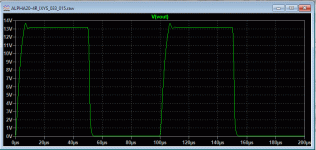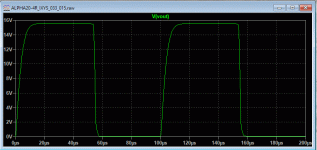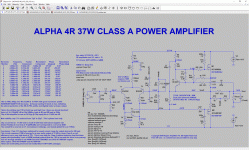Cambe,
Your chassis dimension look good to go for the Alpha Nirvana. If I understand correctly:
- You have 4 heat-sinks
- Each heat-sink is approx 8" x 10" in size
- The heat-sink base plate is 0.375" thick
- The heat-sink fins are 2.5" long
Your chassis dimension look good to go for the Alpha Nirvana. If I understand correctly:
- You have 4 heat-sinks
- Each heat-sink is approx 8" x 10" in size
- The heat-sink base plate is 0.375" thick
- The heat-sink fins are 2.5" long
Yes, Zman01 has got it right. This chassis is perfect for the AN. You could even run a bit higher bias current and voltage with no issues as this resembles a super sized 5U (4.7U) 500mm (extra deep) chassis.
Thank you zman01 and X.
Yes, the quantity and dimensions are correct zman01.
X, I was hoping to be able to use the(2) Triad 500VA, 24 secondary transformers already mounted in the chassis 😉
Regards,
Cambe
Yes, the quantity and dimensions are correct zman01.
X, I was hoping to be able to use the(2) Triad 500VA, 24 secondary transformers already mounted in the chassis 😉
Regards,
Cambe
Cambe,
An outstanding chassis/heatsink combo.
Where did you get it? It's a keeper..... and would give you a rise over ambient no more than 25C even in the hot Carolina summer!
HD
An outstanding chassis/heatsink combo.
Where did you get it? It's a keeper..... and would give you a rise over ambient no more than 25C even in the hot Carolina summer!
HD
Hi Hugh,
Thank you, for the encouragement. 🙂 The chassis is from scratch it appears. It is an a build from diyAudio member Pinocchio that once housed an Aleph 5.
Yes, I am glad I kept it too! 😉
Thank you, for the encouragement. 🙂 The chassis is from scratch it appears. It is an a build from diyAudio member Pinocchio that once housed an Aleph 5.
Yes, I am glad I kept it too! 😉
Thank you zman01 and X.
Yes, the quantity and dimensions are correct zman01.
X, I was hoping to be able to use the(2) Triad 500VA, 24 secondary transformers already mounted in the chassis 😉
Regards,
Cambe
Perfect when used with an SLB which needs the extra voltage drop. You are basically 85% of the way there to a running amp.
Hi Danny,
Any more progress on your beautiful Alpha? Will these drive your Accuton based Myref speakers?
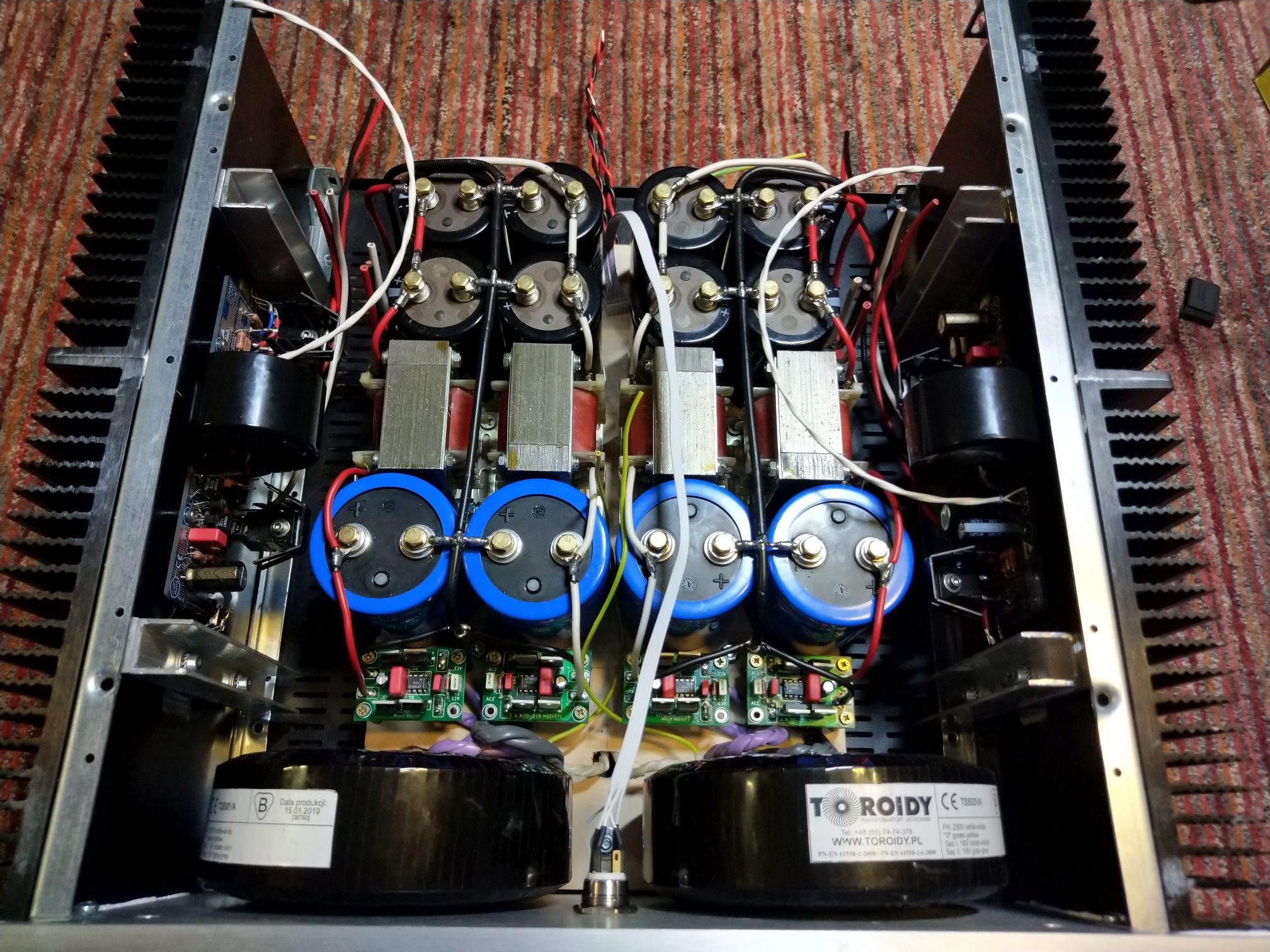
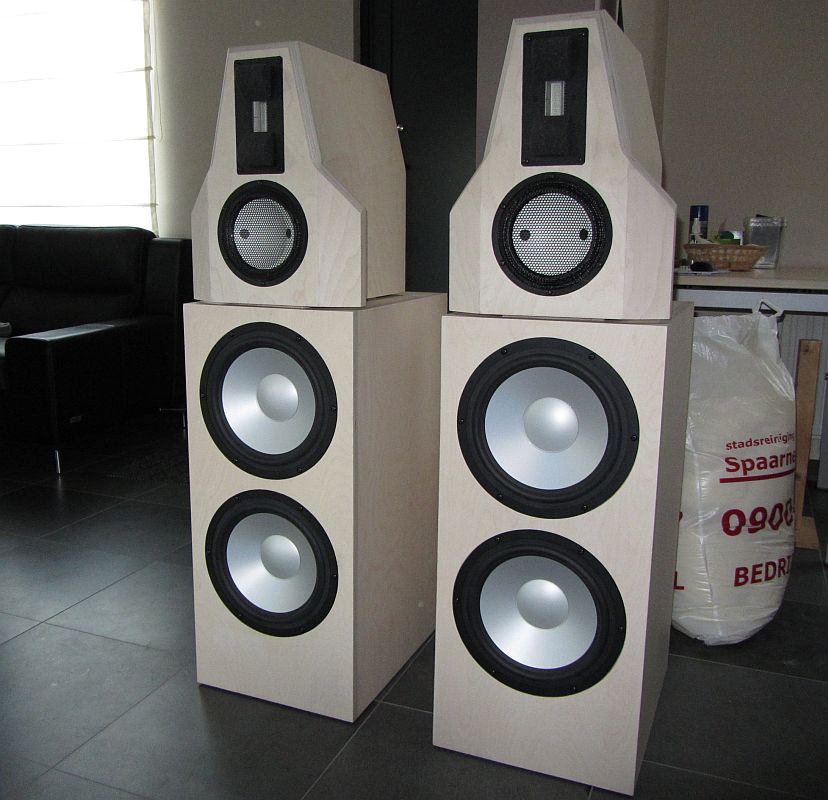
Very impressive setup!
Any more progress on your beautiful Alpha? Will these drive your Accuton based Myref speakers?
Very impressive setup!
Last edited:
Hi X,
This afternoon I have some time to do the final work on the Alpha.
Hopefully SE Alpha music this evening 🙂
Yep, they will definitely drive my RefSpeakers, after first testing on dummy resistor load 🙂
The RefSpeakers in version 2 look better now
This afternoon I have some time to do the final work on the Alpha.
Hopefully SE Alpha music this evening 🙂
Yep, they will definitely drive my RefSpeakers, after first testing on dummy resistor load 🙂
The RefSpeakers in version 2 look better now
Attachments
Last edited:
Hi Hugh,
Thank you, for the encouragement. 🙂 The chassis is from scratch it appears. It is an a build from diyAudio member Pinocchio that once housed an Aleph 5.
Yes, I am glad I kept it too! 😉
Yeah! That brings back memories! This amplifier has traveled a lot! Nice to see it will be recycled. The chassis is huge.
Do
Hi Danny,
Any more progress on your beautiful Alpha? Will these drive your Accuton based Myref speakers?
Very impressive setup!
Amazing work as usual!!!
First test on right channel, succeeded !!! 🙂
Still no smoke after 5 minutes, let's keep it like this 🙂
Next step is the left channel: I still need to connect the left PS to the left PCB when the PS caps are empty,
it takes 30 minutes through the bleeder resistor/led.
Still no smoke after 5 minutes, let's keep it like this 🙂
Next step is the left channel: I still need to connect the left PS to the left PCB when the PS caps are empty,
it takes 30 minutes through the bleeder resistor/led.
Attachments
Last edited:
Thanks for the compliments !
It is still feasible to lift this amplifier, another story is my RefSpeaker,
especially when I was tuning the port length that is on the bottom.
The bleeder takes only 30 minutes on the left PS because nothing is yet connected to the left PS.
The right channel bleeds much faster through the Alpha PCB.
It is still feasible to lift this amplifier, another story is my RefSpeaker,
especially when I was tuning the port length that is on the bottom.
The bleeder takes only 30 minutes on the left PS because nothing is yet connected to the left PS.
The right channel bleeds much faster through the Alpha PCB.
Danny,
You've had it up and running a couple of days.
Any thoughts on the sound quality?
Interested minds..........
Hugh
You've had it up and running a couple of days.
Any thoughts on the sound quality?
Interested minds..........
Hugh
Hi Hugh,
Not yet, before I do some critical listening I like the amp to have already 20-50 hours of burn-in.
What I know is that the amplifier is dead silent with ground loop breakers installed.
Even with a DB meter close to the drivers I don't see/hear anything.
One thing I already noticed is that I hear now a larger difference between good and bad recordings.
Hopefully this WE some listening time.
Danny
Not yet, before I do some critical listening I like the amp to have already 20-50 hours of burn-in.
What I know is that the amplifier is dead silent with ground loop breakers installed.
Even with a DB meter close to the drivers I don't see/hear anything.
One thing I already noticed is that I hear now a larger difference between good and bad recordings.
Hopefully this WE some listening time.
Danny
Last edited:
Hi Hugh,
We just had a short listening session, Bernard brought over his Sony VFet amplifier
That Sony VFet plays in the upper league, that's serious competition 😱
The new Alpha had about 20 hours burn-in playtime.
Some impressions:
The Alpha has an extremely low noisefloor, with the volume on max, I can't hear anything and my DB meter next to the drivers shows not 1db of elevated noise.
So the background is really black.
All the details in the music are easy to hear, like the different voice intonations and breathing are clearly audible, nicely separated from the instruments.
Compared to the Sony VFet is the detail and the width of the soundstage on the same level.
In what my Alpha 4R loses against the Sony VFet is the depth of the soundstage, the VFet portrayed nicely in different depth layers,
my Alpha less.
I suspect this is to the additional feedback that my Alpha 4R has.
Normally the Alpha has a 820R FB shunt resistor, I've changed that to 1.8K, this gives less gain and lower THD on high 4R output.
But probably messes also with the phase and soundstage depth.
But here's the story, I don't need that high output, if I play crazy loud my 93db speakers get about 4vpp, that's plenty, 1-2Vpp is at normal listening levels.
So for 4R stability I can get away with a smaller FB resistor, let's say 1.2K
Something else that I noticed with that higher 1.8k FB is that the 1kHz square wave has some oscillation (picture 1)
When I simulated this in LTspice with 1.8k FB I also get the oscillation (picture 2),
but with 1.2k FB that oscillation is gone (picture 3).
What's next ?
Change the FB shunt resistor to 1.2K, THD still looks great in LTspice at 20vpp for 4R load.
Also some cap stuff, although I hate that, why can't a cap be completely invisible to the sound signature?
I've used Elna Cerafine caps in the FB shunt, those will be changed to Silmic.
From what I've read it should be an upgrade.
Up to round two 🙂
Regards,
Danny
We just had a short listening session, Bernard brought over his Sony VFet amplifier
That Sony VFet plays in the upper league, that's serious competition 😱
The new Alpha had about 20 hours burn-in playtime.
Some impressions:
The Alpha has an extremely low noisefloor, with the volume on max, I can't hear anything and my DB meter next to the drivers shows not 1db of elevated noise.
So the background is really black.
All the details in the music are easy to hear, like the different voice intonations and breathing are clearly audible, nicely separated from the instruments.
Compared to the Sony VFet is the detail and the width of the soundstage on the same level.
In what my Alpha 4R loses against the Sony VFet is the depth of the soundstage, the VFet portrayed nicely in different depth layers,
my Alpha less.
I suspect this is to the additional feedback that my Alpha 4R has.
Normally the Alpha has a 820R FB shunt resistor, I've changed that to 1.8K, this gives less gain and lower THD on high 4R output.
But probably messes also with the phase and soundstage depth.
But here's the story, I don't need that high output, if I play crazy loud my 93db speakers get about 4vpp, that's plenty, 1-2Vpp is at normal listening levels.
So for 4R stability I can get away with a smaller FB resistor, let's say 1.2K
Something else that I noticed with that higher 1.8k FB is that the 1kHz square wave has some oscillation (picture 1)
When I simulated this in LTspice with 1.8k FB I also get the oscillation (picture 2),
but with 1.2k FB that oscillation is gone (picture 3).
What's next ?
Change the FB shunt resistor to 1.2K, THD still looks great in LTspice at 20vpp for 4R load.
Also some cap stuff, although I hate that, why can't a cap be completely invisible to the sound signature?
I've used Elna Cerafine caps in the FB shunt, those will be changed to Silmic.
From what I've read it should be an upgrade.
Up to round two 🙂
Regards,
Danny
Attachments
It is actually the DIY Sony Vfet with only one set of complementary Vfets at the output per channel: http://www.firstwatt.com/pdf/art_diy_sony_vfet.pdf
These are very good results, Danny, thank you........
I suspect that the heavy ringing on square wave is lack of fb network control, and low current at the collector of the VAS driving the pmos gate. You could improve the ring damping by halving the fb resistors; so change R7 and R2 to 10k, then R6 to 820R, and finally R16 to 100k. That should restore the depth of image, a very subtle quality and worth having in any amplifier.
If you examine the Nirvana you will see that I set the VAS collector much higher at around 7mA, and this gives more control over the gate nmos (the output stage is reversed there).
I looked at Nelson's SIT/Vfet design. Very good design, but a lot of components compared to the Nirvana, and a lot of inefficiencies in the output stage with the IRF cascodes. He says that with more components there is less chance of the amp being built; absolutely, and the reason I kept the ALPHAs at low parts count.
Great implementation, thank you for sharing it, and with your thoughts and impressions.
Hugh
I suspect that the heavy ringing on square wave is lack of fb network control, and low current at the collector of the VAS driving the pmos gate. You could improve the ring damping by halving the fb resistors; so change R7 and R2 to 10k, then R6 to 820R, and finally R16 to 100k. That should restore the depth of image, a very subtle quality and worth having in any amplifier.
If you examine the Nirvana you will see that I set the VAS collector much higher at around 7mA, and this gives more control over the gate nmos (the output stage is reversed there).
I looked at Nelson's SIT/Vfet design. Very good design, but a lot of components compared to the Nirvana, and a lot of inefficiencies in the output stage with the IRF cascodes. He says that with more components there is less chance of the amp being built; absolutely, and the reason I kept the ALPHAs at low parts count.
Great implementation, thank you for sharing it, and with your thoughts and impressions.
Hugh
- Home
- Amplifiers
- Solid State
- Aksa Lender P-MOS Hybrid Aleph (ALPHA) Amplifier
![P00223-141706[1].jpg](/community/data/attachments/733/733041-1f96cd3ec1312f5bb63adc0d5a26719e.jpg?hash=H5bNPsExL1)

![P00223-200646[2].jpg](/community/data/attachments/733/733977-17090482123c154b534b0d1893486cac.jpg?hash=FwkEghI8FU)

